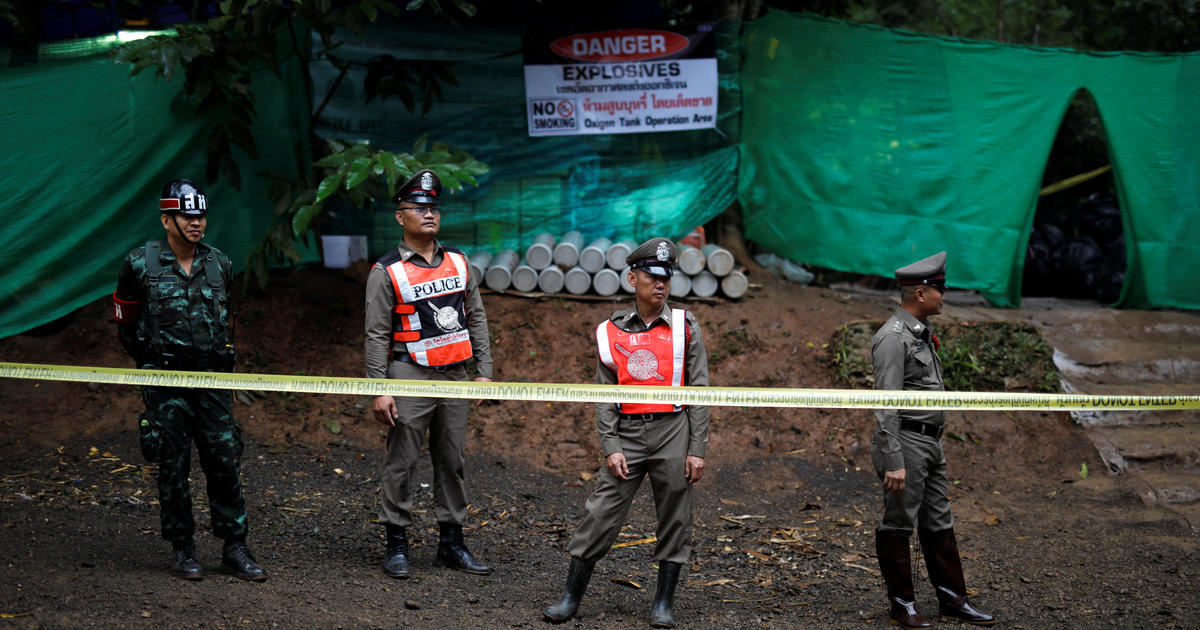
“A really, really tricky dive”: A look at some of the rescue’s challenges
The rescue operation to save 12 boys and their coach from a cave will be “really, really tricky,” said Sink or Swim Scbua instructor Brent Clevenger in an interview with CBSN on Saturday. Clevenger said the biggest concerns look like the tight passageways, strong currents and low visiblity.
It’s estimated that it will take the divers several hours to reach the boys, and then several hours to return. Each rescue is estimated to take about 11 hours, officials said.
As Clevenger noted to CBSN, a diver will need to change tanks, making it a “really, really tricky dive for an experienced diver on his own.”
Clevenger also said another concern will be the oxygen levels. If carbon dioxide builds up and oxygen runs low, it could potentially cause panic, unconsciousness and even death. On Thursday, a former Thai Navy SEAL who was part of the rescue mission died from lack of oxygen, authorities.
Of course, the boys are only now learning to dive, and Clevenger said he normally teaches boys to dive in shallow water, so they can stand up if they panic. In this case, the boys will be going through passageways where they can’t stand up. And even if the boys are with experienced divers, the narrow passageways will make it hard for the experienced divers to check on any boy who might be panicking.
“I think the best rescue option is to teach them to dive, try to get multiple divers watching one boy at a time and just do the best with it,” Clevenger said. “I would say there’s not a good option, there’s just a bset option that we have, but like I said, there’s no good option at this point.”

